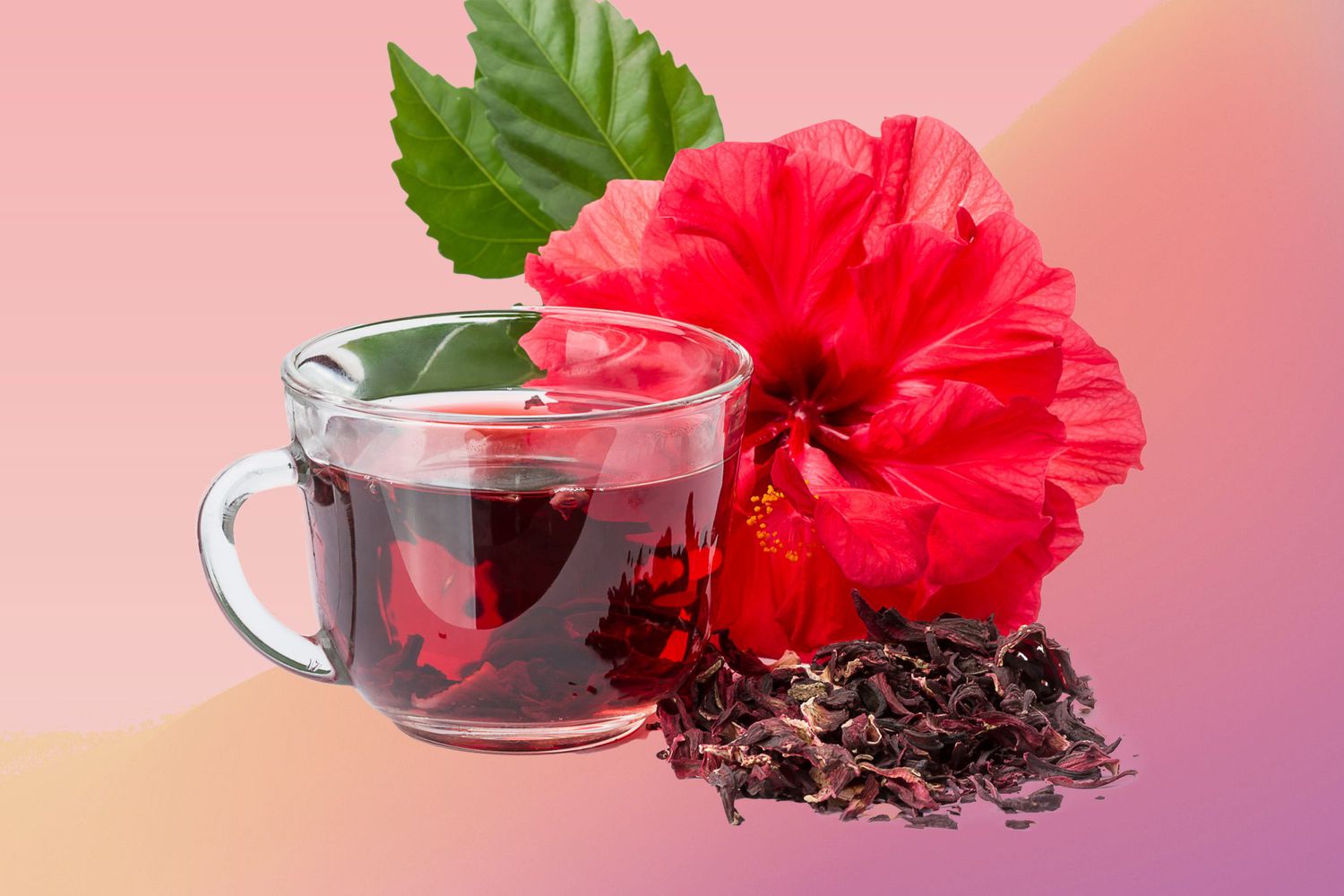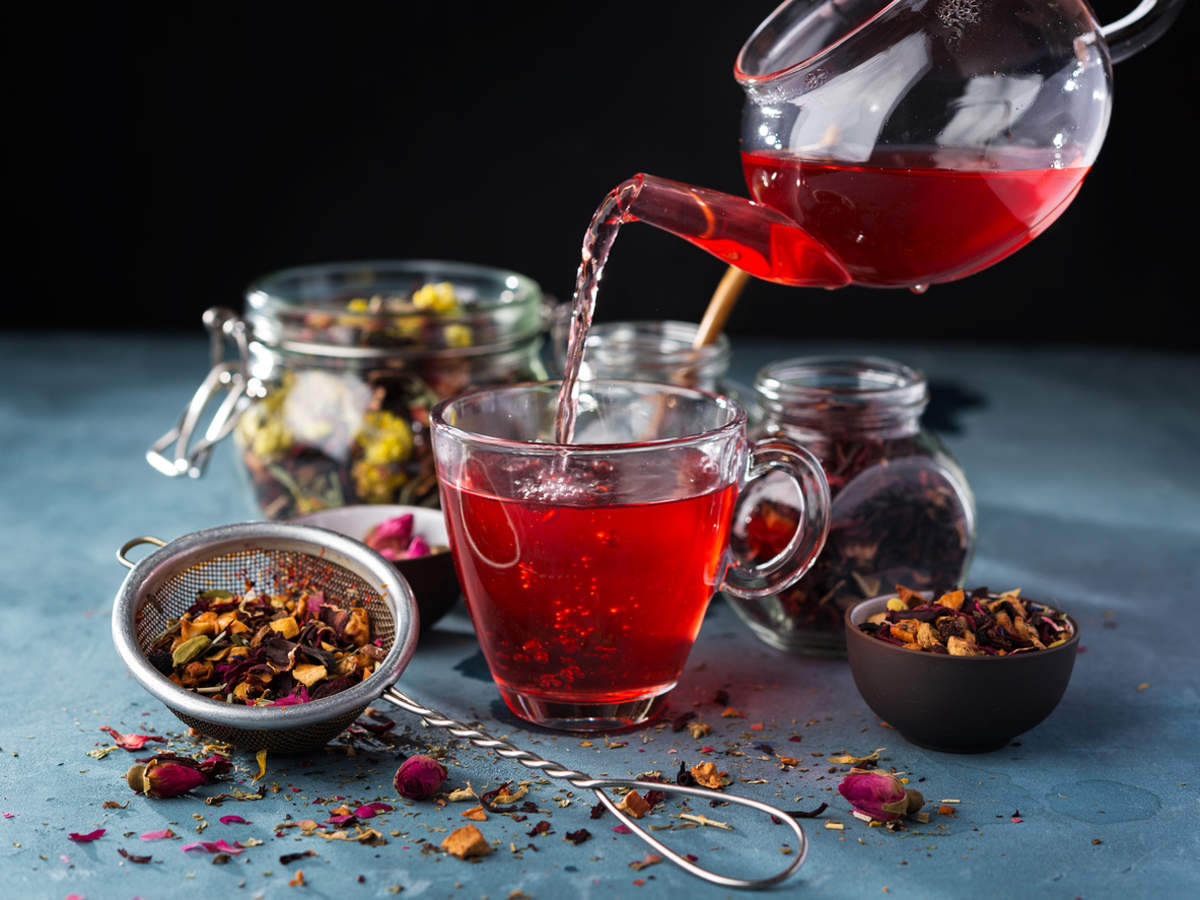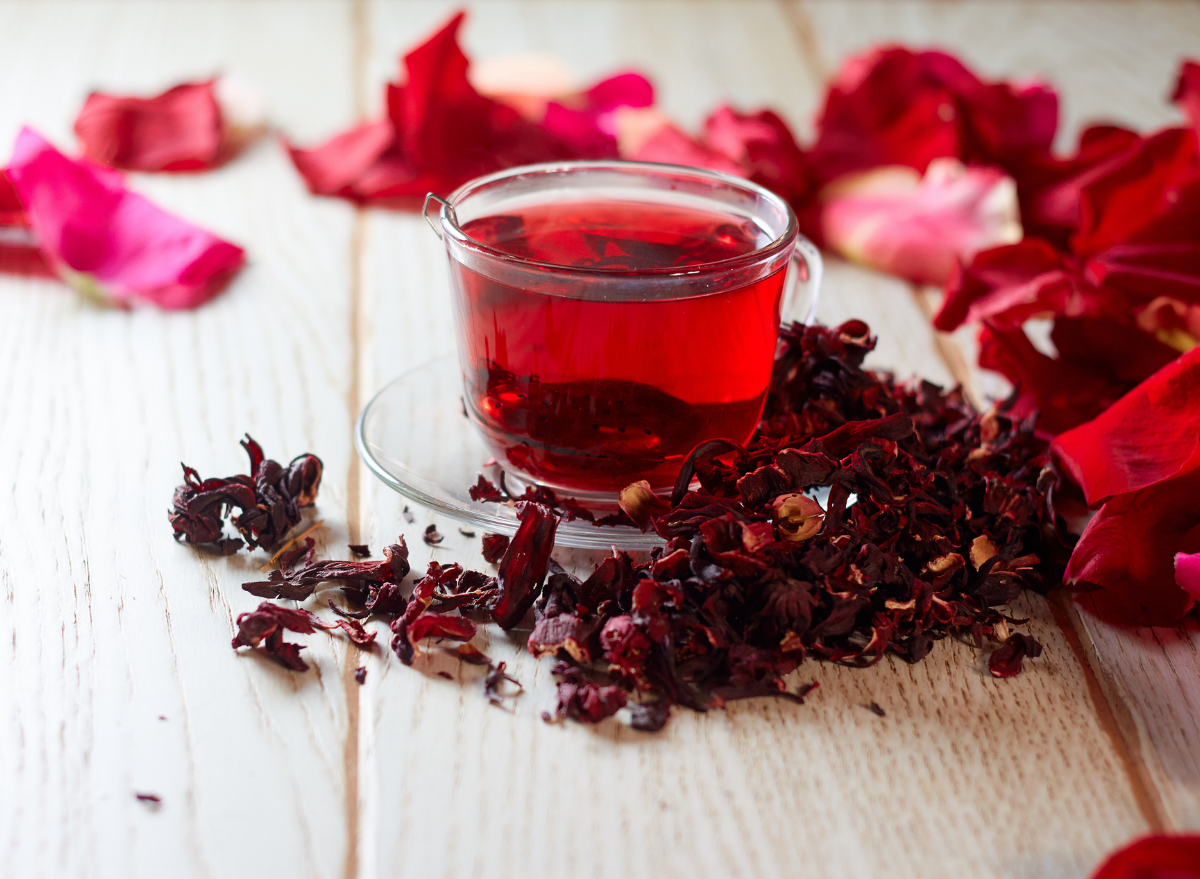Hibiscus tea is tasty, pretty and full of antioxidants that could be responsible for several health benefits. No wonder it was named one of the 2022 top food trends!
If you’ve noticed hibiscus popping up on cocktail menus or as an ingredient in nonalcoholic beverages lining supermarket shelves, there’s a good reason. Hibiscus has been noted as one of the top food trends to watch for in 2022 and beyond. The bright red flower certainly is pretty, but its benefits go way beyond good looks. Read on to find out what hibiscus is, its benefits and side effects, and how you can put hibiscus to use at home.
What Is Hibiscus?
Hibiscus (Hibiscus sabdariffa) is an edible flowering plant native to parts of Africa and Asia, though it’s also cultivated in Mexico and Central America. Contrary to popular belief, the part of the plant you can eat and drink isn’t the petals but rather the calyxes of the flower. Calyxes (or calyces) are the sepals of a flower, which, in addition to other things, are responsible for protecting the buds and petals.
Also known as roselle, sorrel and zobo, among other names, hibiscus is most commonly consumed as tea. Hibiscus tea is made by steeping the red dried calyxes of the plant in cold or hot water. However, the dried calyxes are also widely used in cooking—from making hibiscus syrup and jam to vegan tacos. Dried hibiscus can also be used to add flavor and color to drinks. These red calyxes, found underneath the bloom, contain a high concentration of anthocyanins, a red-blue pigment with antioxidant properties that gives hibiscus its pretty deep red color.
Hibiscus has a refreshing floral taste that combines fruity, tart and sweet. Some people compare the flavor of hibiscus to that of cranberries, but with a floral twist. Is Hibiscus Tea Good for You?
Is Hibiscus Tea Good for You?
While hibiscus tea is not chock-full of vitamins and minerals, it is quite high in antioxidants called polyphenols, specifically anthocyanins. Anne Danahy, RDN, a Scottsdale, Arizona-based registered dietitian and owner of Craving Something Healthy, says the antioxidants in hibiscus tea “account in large part for the tea’s gorgeous red-fuschia color and numerous health benefits.” While hibiscus tea is not a replacement for medication, the research surrounding this soothing sipper is interesting.
Let’s take a closer look at some of the health benefits of these edible calyxes.
Contains Anti-Inflammatory Properties
Registered dietitian Kelsey Lorencz, RD, a nutrition advisor at Fin vs. Fin, notes that “anthocyanins are associated with the prevention of cancer and diabetes and have potent anti-inflammatory effects.” According to a 2017 review published in the Food & Nutrition Research journal, anthocyanins reduce inflammation, which, when chronic, is linked to the progression of diseases such as cancer. Additionally, anthocyanins are known as potential anti-angiogenic agents. Anti-angiogenic agents prevent the body from forming new blood vessels that “feed” tumor cells with oxygen.
May Reduce Blood Lipid Levels
Your blood lipids consist mainly of three components: LDL cholesterol, known as bad cholesterol, HDL cholesterol, known as the good one, and triglycerides, which can increase the risk of heart disease. According to StatPearls, dyslipidemia is a condition that can lead to heart disease and is characterized by the imbalance of HDL cholesterol, LDL cholesterol and triglycerides.A 2018 review on the therapeutic uses of hibiscus, published in the Biomedicine & Pharmacotherapy journal, noted that hibiscus extract has been shown to reduce LDL and triglyceride levels without affecting HDL levels. Hibiscus’s potential effects on lowering blood lipids could positively impact fatty liver disease.
Could Lower Blood Pressure
High blood pressure, medically known as hypertension, is a disease that affects around 47% of the U.S. population, per the Centers for Disease Control and Prevention. As the name implies, hypertension causes the blood pressure in your arteries to rise, putting excess strain on your heart and increasing the risk of heart disease and stroke. Traditionally, the hibiscus flower has been used to reduce blood pressure. Research has shown that hibiscus extract could be used for mild to moderate hypertension.Lorencz explains that “a specific compound in the hibiscus calyx causes nitric oxide to be released from cells within the blood vessels, effectively lowering blood pressure.” A 2021 randomized controlled study published in Molecules concluded that supplementing with hibiscus and lemon verbena (Lippia citriodora) could lower blood pressure indicators in people with prehypertension or type 1 hypertension.
May Help with Blood Sugar
Diabetes mellitus is a chronic disease in which the body cannot regulate blood sugar, per MedlinePlus. There are two main types of diabetes—type 1 and type 2—as well as gestational diabetes, which develops during pregnancy. Type 2 diabetes is more common and affects more than 1 in 10 Americans. Chronic high blood sugar can lead to kidney, liver and vision damage, among other health problems. Research published in 2022 in Pharmaceuticals showed a beneficial effect of hibiscus tea on blood sugar; however, more research is needed to be sure of the relationship.
Potential Side Effects
Hibiscus is considered safe when consumed in moderate amounts in tea (2 to 4 cups per day) and foods. However, Kristin Draayer, M.S., RDN, advises that high doses can cause toxicity. Draayer also notes that hibiscus may interact with certain medications, especially those used to treat high blood pressure or diabetes. Lorencz also recommends that hibiscus be avoided during pregnancy and breastfeeding and prior to surgery due to its blood pressure-lowering effect. Additionally, keep in mind that hibiscus can have diuretic effects on the body, which in excess can lead to dehydration.As always, it’s important to consult with your health care provider before adding anything new to your diet.
How to Make Hibiscus Tea at Home
You can find hibiscus tea bags at some grocery stores, specialty tea shops or online. Making hibiscus tea at home is pretty straightforward—when using disposable tea bags, follow the instructions provided by the manufacturer! And if you come across dried calyxes, the easiest way to make a cup of hibiscus tea is by using a stainless-steel tea infuser.You can also make hibiscus tea by covering 1 tablespoon of dried hibiscus with 8 ounces of boiled water and letting it steep for around 10 minutes. Once steeped, pour the tea through a fine-mesh sieve to remove the solids. The exact steeping time will depend on how strong you like your tea. We recommend tasting at five-minute intervals to determine your preference. Noting the depth of color could also help indicate when your hibiscus tea is ready.
As mentioned above, a great thing about hibiscus tea is that you can serve it hot or cold. For a cold, refreshing hibiscus tea, Draayer recommends mixing the brewed tea with sparkling water or, she says, “Muddle some raspberries or strawberries in the bottom of a glass, add ice and sparkling hibiscus tea.” Really want to jazz it up? Try our Strawberry-Hibiscus Agua Fresca for hot summer days.
Bottom Line
Studies have shown that antioxidants in the hibiscus plant have anti-inflammatory and anti-cancer properties. Additionally, hibiscus tea certainly has some promising potential health benefits, like lowering your blood pressure, stabilizing your blood sugar and reducing your blood lipid levels. However, more research is needed before concluding that hibiscus tea is a cure-all. One thing is for sure: it’s a delicious way to warm up on a cold day or stay refreshed on a hot one.
Source: https://www.eatingwell.com








